Published in 2016 by Enslow Publishing, LLC
101 W. 23rd Street, Suite 240, New York, NY 10011
Copyright 2016 by Robert Gardner
All rights reserved.
No part of this book may be reproduced by any means without the written permission of the publisher.
Cataloging-in-Publication Data
Gardner, Robert.
Astronomy experiments in your own observatory / by Robert Gardner.
p. cm. (Design, build, experiment)
Includes bibliographical references and index.
ISBN 978-0-7660-6951-0 (library binding)
1. AstronomyExperiments Juvenile literature. 2. Science projects Juvenile literature.
I. Gardner, Robert, 1929-. II. Title.
QB46.G36 2016
522d23
Printed in the United States of America
To Our Readers: We have done our best to make sure all Web site addresses in this book were active and appropriate when we went to press. However, the author and the publisher have no control over and assume no liability for the material available on those Web sites or on any Web sites they may link to. Any comments or suggestions can be sent by e-mail to .
Portions of this book originally appeared in the book Astronomy Projects With an Observatory You Can Build.
Illustration Credits: Jonathan Moreno; pialhovick/iStock/Thinkstock (graph paper background throughout book).
Photo Credits: Enslow Publishing, LLC.
Cover Credits: A-R-T-U-R/iStock/Thinkstock (Orion nebula background); Frizzantine/iStock/ Thinkstock (kid with binoculars).
Contents
Introduction
The Scientific Method
Chapter 1.Build Your Own Observatory
1.1Direction and Your Observatory
1.2Finding North
1.3A Magnetic Compass and Finding Direction
1.4Design and Build Instruments for Your Observatory
Chapter 2.Directions, Angles, and a Global View of Earth
2.1How to Locate a Star, Moon, or Planet
2.2Stars and Constellations
2.3Earth: A Global View
 2.4Measuring Earths Girth
2.4Measuring Earths Girth
Chapter 3.The MoonOur Only Natural Satellite
 3.1Distance to the Moon
3.1Distance to the Moon
 3.2Take a Look at the Moon
3.2Take a Look at the Moon
 3.3Changes in the Moons Appearance
3.3Changes in the Moons Appearance
3.4Earth and Moon Scale Models
3.5Location of a Rising Full Moon
3.6Harvest Moon
3.7Is the Moon Bigger When It Rises?
Chapter 4.Our Sun, the Biggest Star You Can See
 4.1Sunrise and Sunset
4.1Sunrise and Sunset
4.2The Suns Path Across the Sky
 4.3Seasons and the Midday Sun
4.3Seasons and the Midday Sun
4.4Sun Through the Seasons
4.5Angle and the Absorption of Radiant Energy
 4.6Using the Sun to Measure Time
4.6Using the Sun to Measure Time
 4.7Sun Time and Clock Time
4.7Sun Time and Clock Time
4.8Sun Dapples and Sun Size
Chapter 5.Stars and Planets
 5.1Do Stars Look Like They Move?
5.1Do Stars Look Like They Move?
 5.2Learning About an Ellipse
5.2Learning About an Ellipse
5.3Foucaults Experiment: A Model
5.4Stars That You See
 5.5Stars and Latitude
5.5Stars and Latitude
5.6Light From a Distance
 5.7The Planet Venus
5.7The Planet Venus
 5.8The Phases of Venus
5.8The Phases of Venus
 5.9Jupiter and Its Moons
5.9Jupiter and Its Moons
Appendix: Science Supply Companies
Further Reading and Web Sites
Index
Introduction
Astronomers often work at observatories, where they use giant telescopes to study stars, planets, and distant galaxies. At the Keck Observatory in Hawaii, they use a reflecting telescope that has a mirror 10 meters (33 feet) in diameter. But even with the clear skies over Hawaii, astronomers are looking at light that is distorted as it passes through Earths atmosphere. Better views have been obtained from telescopes in orbit about Earth. For example, the Hubble Space Telescope, which was carried into space by the space shuttle, has provided amazing images of distant parts of the universe.
This book will help you build your own observatory that you can use to study the daytime and nighttime skya sky unlike that of any other known planet. Your observatory will enable you to carry out experiments and make observations that will answer such questions as the following: Where does Earth fit into the huge universe that surrounds it? Why are there seasons? Why do the Moon and Venus have phases? How many stars can we actually see? How big are the Sun and Moon? and much, much more.
At times, you may need a partner to help you. It would be best if you work with someone who enjoys experimenting as much as you do. In that way you will both enjoy what you are doing. If any danger is involved in doing an experiment, it will be made known to you. In some cases, to avoid any danger to you, you will be asked to work with an adult. Please do so.Do not take any chances that could lead to an injury.
Like any good scientist, you will find it useful to record your ideas, notes, data, and anything you can conclude from your experiments in a notebook. By so doing, you can keep track of the information you gather and the conclusions you reach. It will allow you to refer to experiments you have done and will help you in doing other projects in the future.
SCIENCE FAIRS
Some of the experiments in this book contain ideas you might use for a science fair. These projects are indicated with a  symbol. However, judges at science fairs are not likely to reward projects or experiments that are simply copied from a book. For example, a simple diagram or model of the solar system would not impress most judges; however, photographs of a scaled model of the solar system or a yearlong graph and record of the Suns midday altitude with an explanation of the data would be more likely to attract their attention.
symbol. However, judges at science fairs are not likely to reward projects or experiments that are simply copied from a book. For example, a simple diagram or model of the solar system would not impress most judges; however, photographs of a scaled model of the solar system or a yearlong graph and record of the Suns midday altitude with an explanation of the data would be more likely to attract their attention.
Science fair judges tend to reward creative thought and imagination. It is difficult to be creative or imaginative unless you are really interested in your project; therefore, try to choose an investigation that appeals to you. And before you jump into a project, consider, too, your own talents and the cost of the materials you will need.
If you decide to use an experiment or idea found in this book for a science fair, you should find ways to modify or extend it. This should not be difficult because you will discover that as you do experiments, new ideas come to mind. You will think of experiments that could make excellent science fair projects, particularly because the ideas are your own and are interesting to you.
If you decide to enter a science fair and have never done so, you should read some of the books listed in the Further Reading section. These books deal specifically with science fairs and will provide plenty of hints and useful information that will help you avoid the pitfalls that sometimes plague first-time entrants. You will learn how to prepare appealing reports that include charts and graphs, how to set up and display your work, how to present your project, and how to talk to judges and visitors.

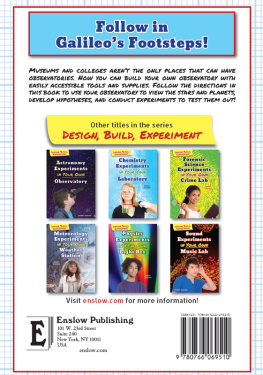



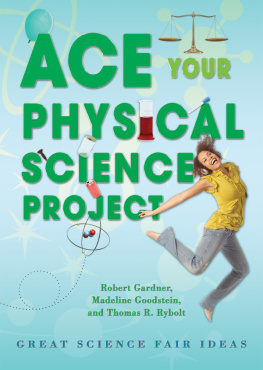
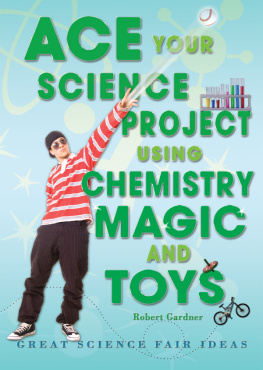
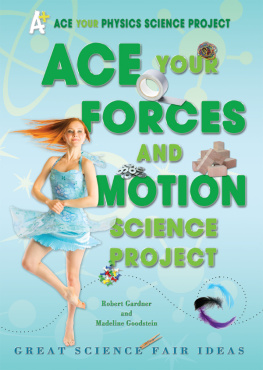
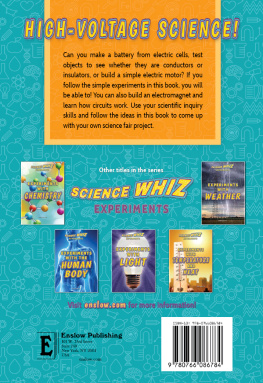
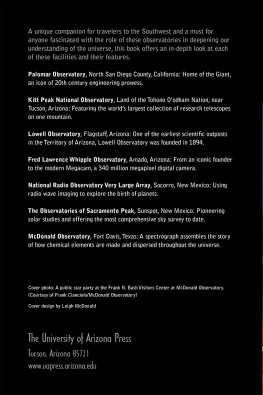

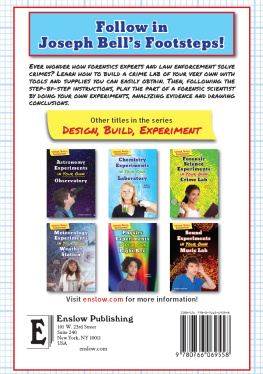
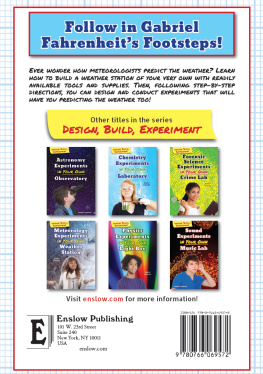
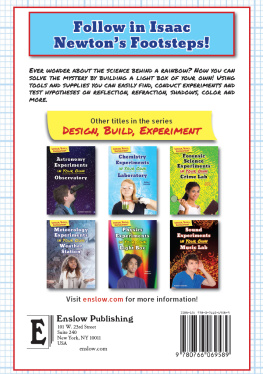


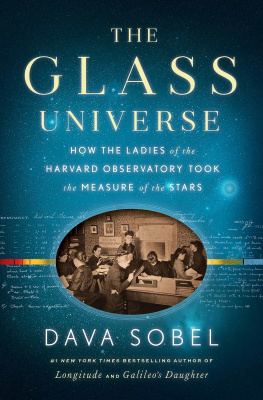
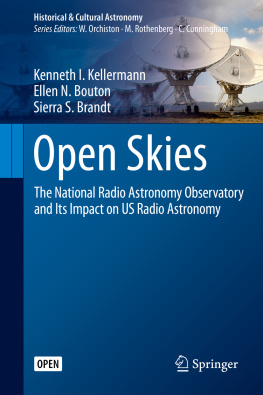


 2.4Measuring Earths Girth
2.4Measuring Earths Girth